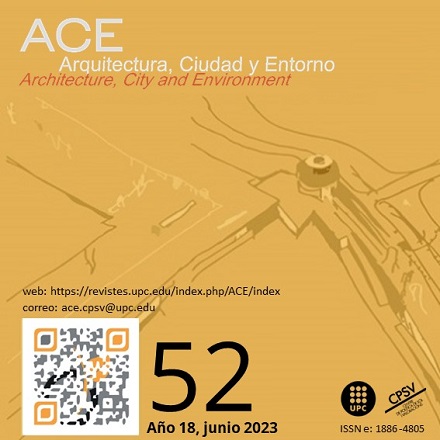Design Variables of Metal Sheet Ventilated Roofs in Hot Humid Climate
DOI:
https://doi.org/10.5821/ace.18.52.11811Keywords:
double roof, metal roof, hot climate, thermal controlAbstract
In hot-humid climates, construction of self-supporting metal sheet roofing is widespread among population with low economic and technological resources due to its low cost and ease of installation. In latitudes close to the equator. with high direct and diffuse solar radiation, thermal behavior of metal roofing is very unfavorable because of its high transmittance and the amount of radiation received by the horizontal plane. Duplicating the metal sheet by creating a double sheet roof with the possibility of ventilation can mean an improvement in interior comfort conditions. In this study, 3 design variables of ventilated metal roofs are defined to evaluate their heat transfer behavior in a hot-humid climate. The studied variables are: distance between the metal sheets, roof inclination and reflectance of exterior surface finish. In order to compare the thermal behavior of the ventilated roofs, surface and air temperatures were measured under different conditions over a 5-months period. Hence, four modules were manufactured, one with a single metal sheet roof and three with ventilated cavities, all of them with the possibility of changing the design variables. These modifications allowed to identify the configuration ranges that presented lower temperature records compared with a simple metal sheet roof. Results showed that a high reflectance level of the external foil, a greater distance between the metal sheets and a pronounced roof inclination, are factors that allow reducing roof overheating, in which surface reflectance level of the external sheet was the parameter with the greatest cooling impact.
Downloads
Published
Issue
Section
License
| INTELECTUAL PROTECTION CRITERIA |
At this moment, it is count with the "Oficina Española de Patentes y Marcas", while global protection it is being processed by the World Intelectual Property Organization (OMPI/WIPO). Nevertheless the International Standard Serial Number Office (ISSN) has given the following numbers ISSN: 1886-4805 (electronic version) and 1887-7052 (paper version). All articles will be peer reviewed, using double blind reviewing. |
| COPYRIGHT |
The article contents and their comments are authors exclusive liability, and do not reflect necessarily the journal editor commitee's opinion. All ACE published works are subject to the following licence CC BY-NC-ND 3.0 ES http://creativecommons.org/licenses/by-nc-nd/3.0/es/ It implies that authors do not hold nor retain the copyright without restrictions but only those included in the licence. |





































